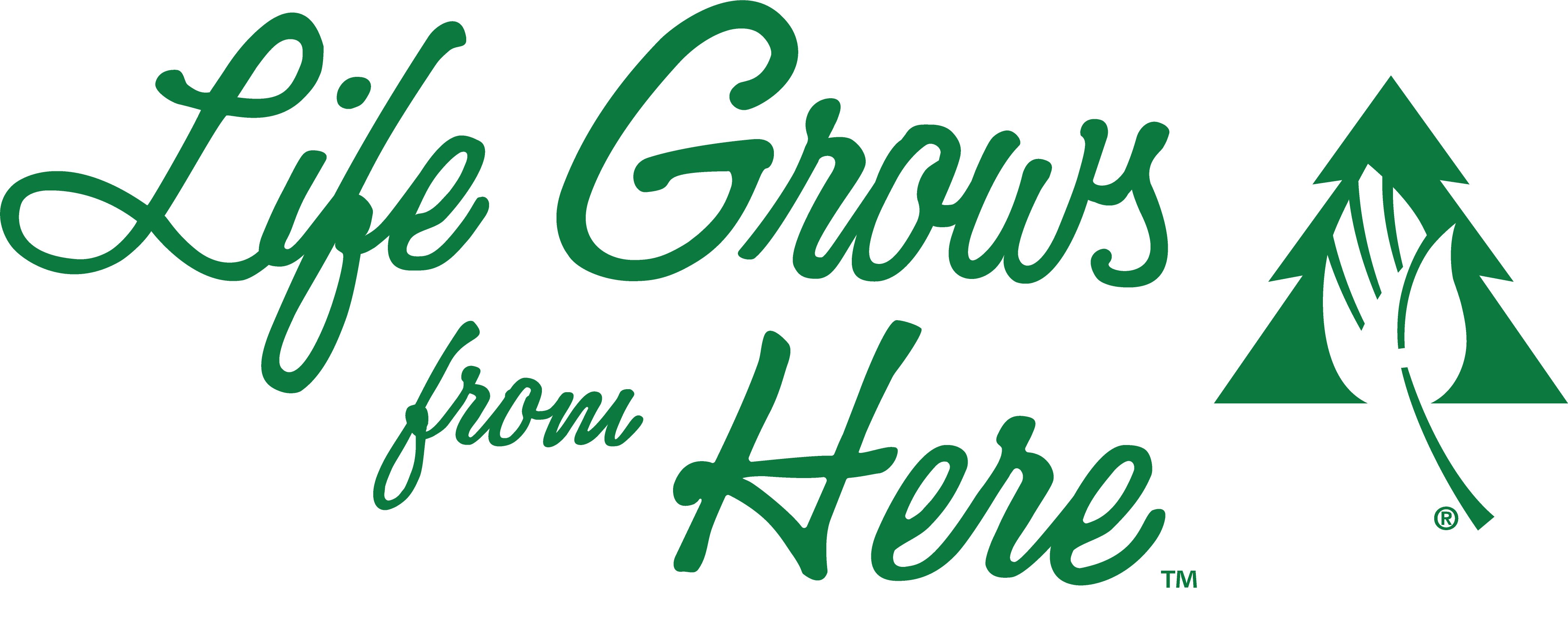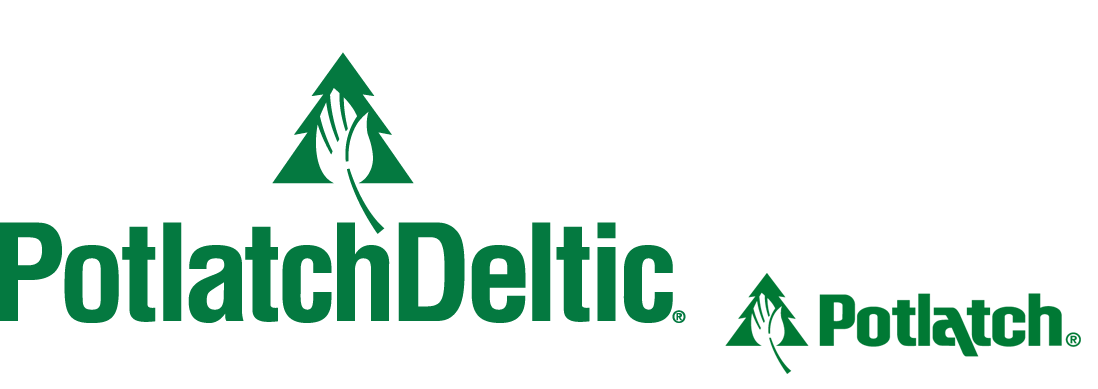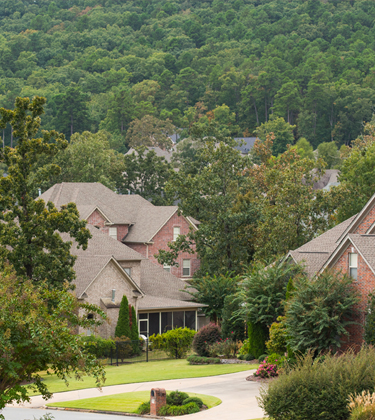
Real Estate
Committed to Thinking Green
Our real estate developments incorporate environmental practices. In rural real estate, conservation outcomes are at the heart of our objectives, and we seek to partner with organizations to benefit recreation, water quality, and wildlife.
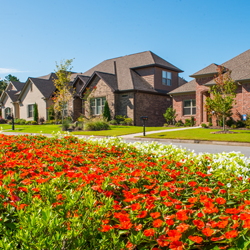
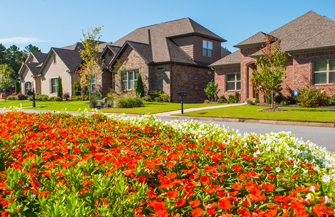
DEVELOPMENT
PotlatchDeltic’s real estate development business currently consists of two communities that were part of the merger in 2018 with Deltic Timber Corporation: Chenal Valley and Red Oak Ridge.
Our Chenal Valley master-planned community in west Little Rock is one of the premier real estate developments in Arkansas. We develop and sell both residential and commercial property while incorporating several environmentally conscious practices into the development process. The Chenal area consists of 6,700 acres, of which 60% is designated as residential. Approximately 20% of each neighborhood is set aside as greenspace. In addition, large areas of greenspace, about 15% of the total acreage, are preserved throughout the development and between neighborhoods.
The master plan is generally designed around the existing topography with more dense development in flat areas and less dense development and greenspace in the areas with steeper slopes. Walking paths have been constructed to connect the different areas of Chenal, along with bike paths and playgrounds, to promote a healthy lifestyle for residents.
The Chenal Valley community includes the Chenal Golf and Country Club in Little Rock, which consists of two 18-hole professional golf courses woven throughout the development. Both courses use current technology to manage and conserve water usage as well as to offer urban habitats for wildlife. This technology includes the use of highly efficient irrigation equipment and monitoring equipment including rainfall sensors. These courses provide stormwater detention for the entire Chenal Valley development within the Rock Creek watershed and maintain peak discharges to predevelopment levels. Water management for each course was designed and engineered based upon the distinct geographic and environmental conditions found on each site. Both golf courses are certified as Audubon Cooperative Sanctuaries. This designation exemplifies the Club’s long-term commitment to the protection of the natural environment.
Our Red Oak Ridge development in Hot Springs, Arkansas incorporates many of the same environmentally conscious practices. Large areas within and around the neighborhoods are set aside as greenspace. Walking paths connect the neighborhoods and traverse through adjacent forestland. In addition, Red Oak includes two man-made lakes that provide stormwater detention for the development. The area surrounding the lakes retains its natural vegetative cover to limit erosion and sedimentation. We have developed a fish management program to enhance fishing and we prohibit motorized boats to maintain water quality and a peaceful environment.
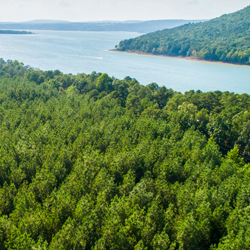
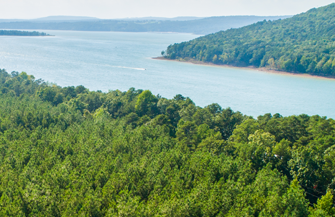
RURAL
Our rural land sales efforts have focused on lands that we have identified as non-strategic or that have a higher and better use than timberland management. These higher uses can be the result of conservation objectives, demand for rural recreational real estate, adjacent landowner interest or other uses such as solar energy sites. Our on-going land stratification process identifies these higher-valued opportunities, which we can sell and redeploy the proceeds into more strategic timberland purchases. As a result of our recent merger with CatchMark, that increased our ownership in Georgia, South Carolina, and Alabama, our Stratified opportunities grew by nearly 70,000 acres.
We are proud to have a significant amount of conservation outcomes from our rural land sales, totaling 257,660 acres since 2004. More recently, since 2018, approximately 51% of our rural land sales acreage has been for conservation outcomes with nearly all the remaining 49% for recreational purposes. These conservation outcomes have been particularly prevalent in our prior ownership in Minnesota where our lands were scattered in areas with unique recreational values and wildlife habitats. In Idaho, early conservation transactions included a conservation easement on over 50,000 acres as part of Idaho’s Forest Legacy Program along the scenic St. Joe River. The St. Joe River is a blue-ribbon Westslope cutthroat trout fishery and the easement permanently secured public access and protected wildlife habitat and sustainable forest management in perpetuity. In Arkansas, we have partnered with and sold land to the Central Arkansas Water District (CAW), which had established a 4,500-acre land purchase program to acquire properties with the objective of safeguarding one of the largest sources of drinking water in the region – Lake Maumelle and the Maumelle River. Additional acreage was sold to CAW in 2024 to further protect the watershed. The purchases enabled specific restoration initiatives in the watershed by focusing on minimizing erosion and silting in the lake and preventing development. A notable Alabama conservation outcome this year was a land sale to the Maskoke (Muscogee) people to preserve a critical viewshed for their Ekvn-Yefolecv ecovillage, enabling the community to protect their cultural and environmental heritage. In addition, we completed a conservation transaction with Arkansas Game & Fish Commission that was adjacent to the Gulf Mountain Wildlife Management Area.
Rural recreational land transactions provide an opportunity for neighboring landowners to increase their ownership, and for buyers to find a place where they can get away to a rural home, go hunting, fishing, hiking, and enjoy the outdoors. Recreational land buyers often have a management plan for wildlife habitat on the property and may obtain a related income stream from active timber management. These transactions can provide the owner a legacy of land ownership and can introduce future generations to the benefits of the outdoors, timberlands, and wildlife.
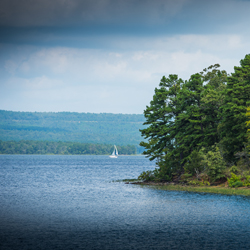
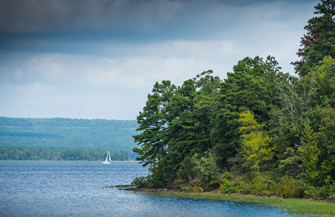
In June 2024, PotlatchDeltic and Central Arkansas Water (CAW) completed the purchase and sale of 2,047 acres of forestland in the Lake Maumelle watershed, a vital source of drinking water for the City of Little Rock and surrounding communities.
LEARN MORE ABOUT CENTRAL ARKANSAS WATER CONSERVATION
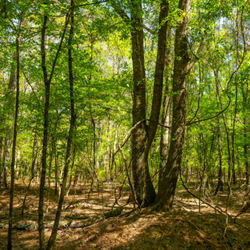
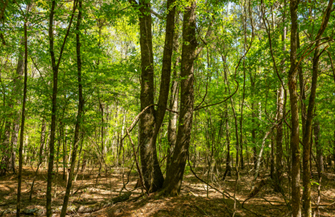
In 2024, PotlatchDeltic sold approximately 3,900 acres of working forests to the Maskoke (Muscogee) people to preserve a critical viewshed for their Ekvn-Yefolecv ecovillage in Coosa County, Alabama, enabling the community to protect their cultural and environmental heritage.
LEARN MORE ABOUT COLLABORATING WITH COMMUNITIES
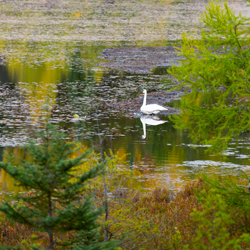

A significant portion of the timberland we once owned in north-central and north-eastern Minnesota was uniquely situated in its ability to participate in conservation outcomes. Over the last 15 years, we have implemented a strategy to work with numerous private and public partners to sell over 143,000 acres for conservation and other public values.
LEARN MORE ABOUT MINNESOTA CONSERVATION


